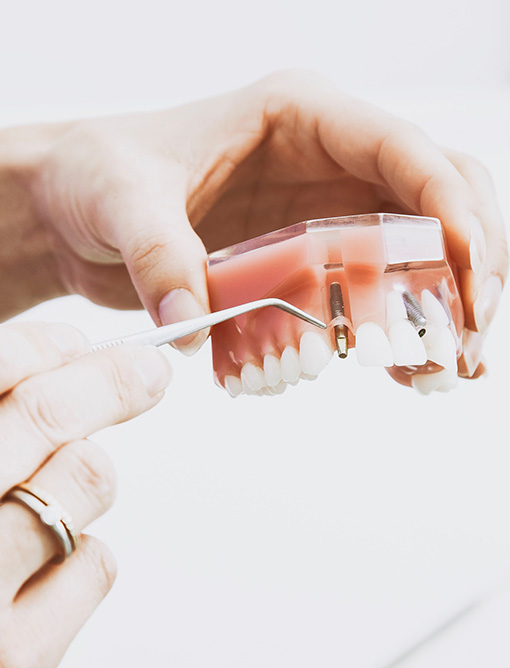Cytarabine Solution for injection or Infusion 100MG / ML
1 Name of the medical product
Cytarabine 100 mg/ml Solution for Injection or Infusion
2 Qualitative and Quantitative composition
1 ml contains 100 mg Cytarabine.
Each 1 ml vial contains 100 mg of Cytarabine.
Each 5 ml vial contains 500 mg of Cytarabine.
Each 10 ml vial contains 1 g of Cytarabine.
Each 20 ml vial contains 2 g of cytarabine.
For full list of excipients, see section 6.1.
3 Pharmaceutical Form
Solution for injection or infusion.
The product is a clear, colourless solution, which is practically free from particles.
pH: 7.0 – 9.5
4 Clinical Particulars
4.1 Therapeutic indications
For induction of remission in acute myeloid leukaemia in adults and for other acute leukaemias of adults and children.
4.2 Posology and method of administration
Posology
Treatment with cytarabine should be initiated by, or be in consultation with, a doctor with extensive experience in treatment with cytostatics. Only general recommendations can be given, as acute leukaemia is almost exclusively treated with combinations of cytostatics.
Dosage recommendations, may be made accordingly to body weight (mg/kg) or according to BSA (mg/m2). Dosage recommendations may be converted from those in terms of bodyweight to those related to surface area by means of nomograms.
1. Remission induction:
Induction therapy dosage and schedule vary depending on the regimen used.
a) Continuous treatment:
The following dose regimens have been used for continuous treatment on remission induction.
i) Rapid injection - 2 mg/kg/day is a judicious starting dose. Administer for 10 days. Obtain daily blood counts. If no antileukaemic effect is noted and there is no apparent toxicity, increase to 4 mg/kg/day and maintain until therapeutic response or toxicity is evident. Almost all patients can be carried to toxicity with these doses.
ii) 0.5 - 1.0 mg/kg/day may be given in an infusion of up to 24 hours duration. Results from one-hour infusions have been satisfactory in the majority of patients. After 10 days this initial daily dose may be increased to 2 mg/kg/day subject to toxicity. Continue to toxicity or until remission occurs.
b) Intermittent treatment:
The following dose regimen have been used for intermittent treatment in remission induction.
i) 3-5 mg/kg/day are administered intravenously on each of five consecutive days. After a two to nine-day rest period, a further course is given. Continue until response or toxicity occurs.
The first evidence of marrow improvement has been reported to occur 7 - 64 days (mean 28 days) after the beginning of therapy.
In general, if a patient shows neither toxicity nor remission after a fair trial, the cautious administration of higher doses is warranted. As a rule, patients have been seen to tolerate higher doses when given by rapid intravenous injection as compared with slow infusion. This difference is due to the rapid metabolism of Cytarabine and the consequent short duration of action of the high dose.
ii) Cytarabine 100-200 mg/m2/24 hours, as continuous infusion for 5-7 days alone or in combination with other cytostatics including for instance an anthracycline has been used. Additional cycles may be administered at intervals of 2-4 weeks, until remission is achieved or unacceptable toxicity occurs.
2. Maintenance therapy:
Maintenance dosage and schedule vary depending on the regimen used.
The following dose regimens have been used for continuous treatment following remission induction.
i) Remissions, which have been induced by Cytarabine, or by other drugs, may be maintained by intravenous or subcutaneous injection of 1 mg/kg once or twice weekly.
ii) Cytarabine has also been administered in doses of 100-200 mg/m2, as continuous infusion for 5 days at monthly intervals as monotherapy or in combination with other cytostatics.
High dosage:
Cytarabine, under strict medical surveillance, is administered as monotherapy or in combination with other cytostatics, 2-3 g/m2, as intravenous infusion, for 1-3 hours every 12 hours for 2-6 days. (Total of 12 doses per cycle). A total treatment dose of 36 g/m2should not be exceeded. Frequently of treatment cycles depends on the response to treatment and hematological and non-hematological toxicity. Also refer to precautions for treatment stopping requirements.
Paediatric patients:
Safety in infants has been not established.
Patient with hepatic and renal impairment:
Patient with impaired hepatic or renal function: Dosage should be reduced.
Cytarabine can be dialyzed. Therefore, Cytarabine should not be administered immediately before or after a dialysis.
Elderly Patients:
High dose therapy in patient >60 years should be administered only after careful risk benefit evaluation.
Method of administration:
For instructions on dilution of the medicinal product before administration, see section 6.6.
Cytarabine injection is intended for intravenous infusion or injection, or subcutaneous injection.
Subcutaneous injection is generally well tolerated, and may be recommended when used in maintenance therapy.
Cytarabine 100 mg/ml should not be administered by the intrathecal route.
4.3 Contraindications
Hypersensitivity to the cytarabine or to any of the excipients of cytarabine injection.
Anaemia, leucopenia and thrombocytopenia of non-malignant aetiology (e.g bone marrow aplasia); unless the clinician feels that such management offers the most hopeful alternative for the patient.
Degenerative and toxic encephalopathies, especially after the use of methotrexate or treatment with ionizing radiation.
4.4 Special Warnings and precautions for use
Paediatric patients
The safety of this drug for use in infants is not established.
Warnings
Cytarabine is a potent bone marrow suppressant. Therapy should be started cautiously in patients with pre- existing drug-induced bone marrow suppression. Patients receiving this drug must be under close medical supervision and, during induction therapy, should have leucocyte and platelet counts performed daily. Bone marrow examinations should be performed frequently after blasts have disappeared from the peripheral blood.
Facilities should be available for management of complications, possibly fatal, of bone marrow suppression (infection resulting from granulocytopenia and other impaired body defences, and haemorrhage secondary to thrombocytopenia).
Anaphylactic reactions have occurred with cytarabine treatment. One case of anaphylaxis that resulted in acute cardiopulmonary arrest and required resuscitation has been reported. This occurred immediately after the intravenous administration of Cytarabine.
Severe and at times fatal CNS, GI and pulmonary toxicity (different from that seen with conventional therapy regimens of Cytarabine) has been reported following some experimental Cytarabine dose schedules. These reactions include reversible corneal toxicity; cerebral and cerebellar dysfunction, usually reversible; somnolence; convulsion; severe gastro-intestinal ulceration, including pneumatosis cystoides intestinalis, leading to peritonitis; sepsis and liver abscess; and pulmonary oedema.
Cytarabine has been shown to be carcinogenic in animals. The possibility of a similar effect should be borne in mind when designing the long- term management of the patient.
Precautions
Patients receiving Cytarabine must be monitored closely. Frequent platelet and leucocyte counts are mandatory. Suspend or modify therapy when drug induced marrow depression has resulted in a platelet count under 50,000 or a polymorphonuclear count under 1,000 per cubic mm. Counts of formed elements in the peripheral blood may continue to fall after the drug is stopped, and reach lowest values after drug free intervals of five to seven days. If indicated, restart therapy when definite signs of marrow recovery appear (on successive bone marrow studies). Patients whose drug is withheld until 'normal' peripheral blood values are attained may escape from control.
Peripheral motor and sensory neuropathies after consolidation with high doses of cytarabine, daunorubicin, and asparaginase have occurred in adult patients with acute non lymphocytic leukaemia. Patients treated with high doses of cytarabine should be observed for neuropathy since dose schedule alterations may be needed to avoid irreversible neurologic disorders.
Severe and sometimes fatal pulmonary toxicity, adult respiratory distress syndrome and pulmonary oedema have occurred following high dose schedules with cytarabine therapy.
When intravenous doses are given quickly, patients are frequently nauseated and may vomit for several hours afterwards. This problem tends to be less severe when the drug is infused.
Abdominal tenderness (peritonitis) and guaiac positive colitis, with concurrent neutropenia and thrombocytopenia, have been reported in patients treated with conventional doses of cytarabine in combination with other drugs. Patients have responded to nonoperative medical management.
Delayed progressive ascending paralysis resulting in death has been reported in children with AML following intrathecal and intravenous cytarabine at conventional doses in combination with other drugs.
Patient with pre-existing hepatic impairment
Both hepatic and renal function should be monitored during cytarabine therapy. In patients with pre-existing liver impairment cytarabine should be administered only with utmost care.
Periodic checks of bone marrow, liver and kidney functions should be performed in patients receiving cytarabine.
Like other cytotoxic drugs, cytarabine may induce hyperuricaemia secondary to rapid lysis of neoplastic cells. The clinician should monitor the patient's blood uric acid level and be prepared to use such supportive and pharmacological measures as may be necessary to control this problem.
Vaccine/Immunosuppressant Effects/Increased Susceptibility to Infections
Administration of live or live-attenuated vaccines in patients immunocompromised by chemotherapeutic agents including cytarabine may result in serious or fatal infections. Vaccination with a live vaccine should be avoided in patients receiving cytarabine. Killed or inactivated vaccines may be administered; however, the response to such vaccines may be diminished.
High-dose
The risk of CNS side effects is higher in patients who have previously had CNS treatment as chemotherapy intrathecally or radiation therapy.
Concurrent granulocyte-transfusion should be avoided as severe respiratory insufficiency have been reported.
Cases of cardiomyopathy with subsequent death has been reported following experimental high dose therapy with cytarabine in combination with cyclophosphamide when used for bone marrow transplant preparation.
4.5 Interaction with other medicinal products and other forms of interaction
5-Fluorocytosine
5-Fluorocytosine should not be administered with cytarabine as the therapeutic efficacy of 5- fluorocytosine has been shown to be abolished during such therapy.
Digoxin
Reversible decreases in steady-state plasma digoxin concentrations and renal glycoside excretion were observed in patients receiving beta-acetyldigoxin and chemotherapy regimens containing cyclophosphamide, vincristine and prednisone with or without cytarabine or procarbazine. Steady-state plasma digitoxin concentrations did not appear to change. Therefore, monitoring of plasma digoxin levels may be indicated in patients receiving similar combination chemotherapy regimens. The utilisation of digitoxin for such patients may be considered as an alternative.
Gentamicin
An in-vitro interaction study between gentamicin and cytarabine showed a Cytarabine related antagonism for the susceptibility of K. pneumoniae strains. In patients on Cytarabine being treated with gentamicin for a K.pneumoniae infection, a lack of a prompt therapeutic response may indicate the need for re-evaluation of antibacterial therapy.
Use of cytarabine alone or in combination with other immunosuppressive agents
Due to immunosuppressive action of cytarabine injection – viral, bacterial, fungal, parasitic, or saprophytic infections, in any location in the body may be associated with the use of cytarabine alone or in combination with other immunosuppressive agents following immunosuppressant doses that affect cellular or humoral immunity. These infections may be mild, but can be severe and at times fatal.
4.6 Fertility, Pregnancy and lactation
Pregnancy
Cytarabine is known to be teratogenic in some animal species. The use of cytarabine in women who are, or who may become, pregnant should be undertaken only after due consideration of the potential benefits and hazards.
Women have to use effective contraception during and up to 6 months after treatment.
Lactation
This product should not normally be administered to patients who are pregnant or to mothers who are breastfeeding.
Fertility
Fertility studies to assess the reproductive toxicity of cytarabine have not been conducted. Gonadal suppression, resulting in amenorrhea or azoospermia, may occur in patient taking cytarabine therapy, especially in combination with the alkylating agents. In general, these effects appear to be related to dose and length of therapy and may be irreversible (see section 4.8). Given that cytarabine has a mutagenic potential which could induce chromosomal damage in the human spermatozoa, males undergoing cytarabine treatment and their partner should be advised to use a reliable contraceptive method during and up to 6 months after treatment.
4.7 Effects on ability to drive and use machines
Cytarabine has no influence on the ability to drive and use machines. Nevertheless, patients receiving chemotherapy may have an impaired ability to drive or operate machinery and should be warned of the possibility and advised to avoid such tasks if so affected.
4.8 Undesirable Effects
The following adverse events have been reported in association with cytarabine therapy:
Frequencies are defined using the following convention:
Very common (≥1/10)
Common (≥1/100 to <1/10)
Uncommon (≥1/1,000 to <1/100)
Rare (≥1/10,000 to <1/1,000)
Very rare (<1/10,000),
Not known (cannot be estimated from the available data)
Undesirable effects from cytarabine are dosedependent. Most common are gastro-intestinal undesirable effects. Cytarabine is toxic to the bone marrow, and causes haematological undesirable effects.
Infections and infestations:
Uncommon: Sepsis (immunosuppression), cellulitis at injection site.
Not Known: Pneumonia, liver abscess
Neoplasm benign, malignant and unspecified (Incl. cysts and polyps)
Uncommon: Lentigo.
Blood and lymphatic system disorders:
Common: Anaemia, megaloblastosis, leucopenia, thrombocytopenia.
Not Known: Reduced reticulocytes
The severity of these reactions is dose and schedule dependent. Cellular changes in the morphology of bone marrow and peripheral smears can be expected.
Immune system disorders
Uncommon: Anaphylaxis.
Not known: Allergic oedema
Metabolism and nutrition disorders:
Common: Anorexia, hyperuricaemia.
Nervous system disorders:
Common: At high doses cerebellar or cerebral influence with deterioration of the level of consciousness, dysarthria, nystagmus.
Uncommon: headache, peripheral neuropathy
Not known: Neural toxicity, neuritis, dizziness
Eye disorders:
Common: Reversible haemorrhagic conjunctivitis (photophobia, burning, visual disturbance, increased lacrimation), keratitis.
Not known: Conjunctivitis (may occur with rash)
Cardiac disorders:
Uncommon: Pericarditis
Very rare: Arrhythmia.
Respiratory, thoracic and mediastinal disorders:
Uncommon: Pneumonia, dyspnea, sore throat.
Gastrointestinal disorders:
Common: Dysphagia, abdominal pain, nausea, vomiting, diarrhoea, oral / anal inflammation or ulceration
Uncommon: Esophagitis, esophageal ulceration, pneumatosis cystoides intestinalis, necrotising colitis, peritonitis
Not known: Pancreatitis
Hepatobiliary disorders
Common: Reversible effects on the liver with increased enzyme levels.
Uncommon: Jaundice.
Not known: Hepatic dysfunction
Skin and subcutaneous tissue disorders:
Common: Reversible undesirable effects to the skin, such as erythema, bullous dermatitis, urticaria, vasculitis, alopecia.
Uncommon: Skin ulceration, pruritus, burning pain of palms and soles.
Very rare: Neutrophilic eccrine hidradenitis.
Not known: Freckling, rash
Musculoskeletal and connective tissue disorders:
Uncommon: Myalgia, arthralgia.
Renal and urinary disorders:
Common: Renal impairment, urinary retention
General disorders and administration site conditions
Common: Fever, thrombophlebitis at the injection site.
Uncommon: Chest pain.
Cytarabine (Ara-C) Syndrome: (Immunoallergic effect):
Fever, myalgia, bone pain, occasional chest pain, exanthema, conjuctivitis and nausea may occur 6-12 h after start of therapy. Corticosteroids may be considered as prophylaxis and therapy. If they are effective, therapy with cytarabine may be continued.
Adverse effects due to high dose cytarabine treatment, other than those seen with conventional doses include:
Hematological toxicity:
Seen as profound Pancytopenia which may last 15-25 days along with more severe bone marrow aplasia than that observed at conventional doses.
Infections and infestations: Sepsis, liver abscess.
Nervous system disorders:
After treatment with high doses of cytarabine, symptoms of cerebral or cerebellar influence like personality changes, affected alertness, dysarthria, ataxia, tremor, nystagmus, headache, confusion, somnolence, dizziness, coma, convulsions, etc. appear in 8-37 % of treated patients. Peripheral motor and sensory neuropathies have also been reported with high dose therapy. The incidence in elderly (>55 years) may be even higher. Other predisposing factors are impaired liver and renal function, previous CNS treatment (e.g., radiotherapy) and alcohol abuse. CNS disturbances are in the most cases reversible.
The risk of CNS toxicity increases if the cytarabine treatment - given as high dose i.v.- combined with another CNS toxic treatment such as radiation therapy or high dose.
Corneal and conjuctival toxicity: Reversible lesion of corneal and haemorrhagic conjunctivitis have been described. These phenomena can be prevented or decreased by installation of corticosteroid eye drops.
Skin and subcutaneous tissue disorders: Skin rash leading to desquamation, alopecia.
Viral, bacterial, fungal, parasitic, or saprophytic infections, in any location in the body, may be associated with the use of Cytarabine alone or in combination with other immunosuppressive agents following immunosuppressant doses that affect cellular or humoral immunity. These infections may be mild, but can be severe.
A Cytarabine syndrome has been described. It is characterised by fever, myalgia, bone pain, occasionally chest pain, maculopapular rash, conjunctivitis and malaise. It usually occurs 6 - 12 hours following drug administration. Corticosteroids have been shown to be beneficial in treating or preventing this syndrome. If the symptoms of the syndrome are serious enough to warrant treatment, corticosteroids should be contemplated as well as continuation of therapy with Cytarabine.
Gastrointestinal disorders:
Especially in treatment with high doses of cytarabine, more severe reactions may appear in addition to common symptoms. Intestinal perforation or necrosis with ileus and peritonitis have been reported.
Liver abscesses, hepatomegaly, Budd-Chiarisyndrome (hepatic venous thrombosis) and pancreatitis have been observed after high-dose therapy.
Respiratory, thoracic and mediastinal disorders:
Clinical signs as present in pulmonary oedema/ ARDS may develop, particularly in high-dose therapy. The reaction is probably caused by an alveolar capillary injury. It is difficult to make an assessment of frequencies (stated as 10-26 % in different publications), since the patients usually have been in relapse where other factors may contribute to this reaction.
Others:
Following cytarabine therapy, cardiomyopathy and rhabdomyolysis have been reported. One case of anaphylaxis that resulted in cardiopulmonary arrest and required resuscitation has been reported. This occurred immediately after the intravenous administration of cytarabine.
The gastro-intestinal undesirable effects are reduced if cytarabine is administered as infusion. Local glucocorticoides are recommended as prophylaxis of haemorrhagic conjunctivitis.
Amenorrhoea and azoospermia (See section 4.6)
Cytarabine is not recommended for intrathecal use; however, the following side-effects have been reported with such use. Expected systemic reactions: bone marrow depression, nausea, vomiting. Occasionally, severe spinal cord toxicity even leading to quadriplegia and paralysis, necrotising encephalopathy, blindness and other isolated neurotoxicities have been reported.
Reporting of suspected adverse reactions
Reporting suspected adverse reactions after authorisation of the medicinal product is important. It allows continued monitoring of the benefit/risk balance of the medicinal product.
4.9 Overdose
No specific antidote. Managed advised at overdosage include: Cessation of therapy, followed by management of subsequent bone marrow depression including whole blood or platelet transfusion and antibiotics as required. Tweleve doses of 4.5 g/m2 by IV infusion over one hour every 12 hours induces irreversible and fatal central nervous system toxicity.
Cytarabine may be removed by haemodialysis.
5 Pharmacological Properties
5.1 Pharmacodynamic properties
Pharmacotherapeutic group: Pyrimidine analogue
Cytarabine, a pyrimidine nucleoside analogue, is an antineoplastic agent, which inhibits the synthesis of deoxyribonucleic acid specifically in the S phase of the cell cycle. It also has antiviral and immunosuppressant properties. Detailed studies on the mechanism of cytotoxicity in vitro suggests that the primary action of cytarabine is inhibition of deoxycytidine synthesis its active triphosphate metabolite arabinofuranosyl cytosine triphosphate ARA-CTP, although inhibition of cytidylic kinases and incorporation of the compound into nucleic acids may also play a role in its cytostatic and cytocidal actions.
High dose cytarabine regimens can overcome the resistance of leukemic cells no longer responding to conventional doses. Several mechanisms appear to be involved to this resistance:
Increases in the quantity of substrate
Increase in the intracellular pool of ARA-CTP, since there is a positive correlation between intracellular retention of ARA-CTP and percentage of cells in S-phase.
5.2 Pharmacokinetic properties
Cytarabine is deaminated to arabinofuranosyl uracil in the liver and kidneys. After intravenous administration to humans, only 5.8% of the administered doses is excreted unaltered in urine within 12-24 hours, 90% of the dose is excreted as the inactive deaminated product, arabinofuranosyl uracil (ARA-U). Cytarabine appears to be metabolised rapidly, primarily by the liver and perhaps by the kidney. After single high intravenous doses, blood levels fall to unmeasurable levels within 15 minutes in most patients. Some patients have indemonstrable circulating drug as early as 5 minutes after injection. The half life of the drug is 10 minutes.
High dose cytarabine achieves plasma peak levels 200 fold higher than that observed with conventional dose regimen. The peak of inactive metabolite ARA-U, with high dose regimen, is observed after only 15 minutes. The renal clearance is slower with high dose cytarabine than with conventional dose cytarabine. The cerebrospinal fluid (CSF) levels achieved, after high dose 1-3 g/m2cytarabine intravenous infusion, are around 100-300 nanograms/ml.
Peak plasma levels are achieved about 20-60 minutes after subcutaneous application. At comparable doses, they are significantly lower than plasma levels achieved after intravenous administration.
5.3 Preclinical safety data
There are no preclinical data of relevance to the prescriber which are additional to that already included in other sections of the Summary of Product Characteristics.
6 Pharmaceutical Particulars
6.1 List of excipients
Macrogol 400
Trometamol (For pH adjustment)
Water for Injections
6.2 Incompatibilities
Incompatibilities with: carbenicillin sodium, cephalothin sodium, gentamicin sulphate Heparin sodium, hydrocortisone sodium succinate, insulin regular, Methotrexate, 5- fluorouracil, nafcillin sodium, oxacillin sodium, penicillin G sodium (benzyl penicillin), methylprednisolone sodium succinate and prednisolone succinate.
However, the incompatibility depends on several factors (e.g concentrations of the drug, specific diluents used, resulting pH, temperature). Specialised references should be consulted for specific compatibility information.
This medicinal product must not be mixed with other medicinal products excepts those mentioned in section 6.6
6.3 Shelf life
2 years
In use stability: Chemical and physical in-use stability has been demonstrated in sodium chloride injection (0.9 % w/v) and dextrose injection (5% w/v) for up to 24 hours at temperature below 25° C and for up to 72 hours at 2-8° C .
From a microbiological point of view, the product should be used immediately. If not used immediately, in-use storage times and conditions prior to use are the responsibility of the user and would normally not be longer than 24 hours at 2-8° C, unless dilution has taken place in controlled and validated aseptic conditions.
6.4 Special precautions for storage
Do not store above 25° C.
Do not refrigerate or freeze.
For storage precaution of diluted medicinal product refer to section 6.3
6.5 Nature and contents of container
For 1 ml,
Solution for injection is filled in 2 ml Type - I clear glass vial closed with 13 mm grey rubber stopper and 13 mm aluminium flip-off transparent blue seal/13 mm aluminium flip off royal blue seal.
For 5 ml,
Solution for injection is filled in 5 ml Type - I clear tubular glass vial closed with 20 mm grey rubber stopper and 20 mm aluminium flip-off transparent blue seal/20 mm aluminium flip off royal blue seal.
For 10 ml,
Solution for injection is filled in 10 ml Type - I clear tubular glass vial closed with 20 mm grey rubber stopper and 20 mm aluminium flip-off transparent blue seal/20 mm aluminium flip off royal blue seal.
For 20 ml,
Solution for injection is filled in 20 ml Type-I clear glass vial closed with 20 mm grey rubber stopper and 20 mm aluminium flip off royal blue seal.
For 40 ml,
Solution for injection is filled in 50 ml Type - I clear moulded glass vial closed with 20 mm grey rubber stopper and 20 mm aluminium flip-off royal blue seal.
For 50 ml,
Solution for injection is filled in 50 ml Type - I clear moulded glass vial closed with 20 mm grey rubber stopper and 20 mm aluminium flip-off violet seal.
Pack sizes:
1 × 1 ml vial, 5 × 1 ml vial
1 × 5 ml vial, 5 × 5 ml vial
1 × 10 ml vial
1 X 20 ml vial
1 × 40 ml vial
1 X 50 ml vial
Not all pack sizes may be marketed.
6.6 Special precautions for disposal and other handling
For single use only.
If solution appears discoloured or contains visible particles, it should be discarded.
Once opened, the contents of each vial must be used immediately. Discard any unused contents.
Water for injections, 0.9% w/v saline or 5% w/v dextrose are commonly used infusion fluids for Cytarabine (see Section 6.3). Cytarabine injection should not to be mixed any other medicinal products except those mentioned in section 6.6.
Cytotoxic Handling Guidelines
Administration:
Should be administered by, or under the direct supervision of a qualified physician who is experienced in the use of cancer chemotherapeutic agents.
Preparation:
• Chemotherapeutic agents should be prepared for administration only by professionals trained in the safe use of the preparation.
• Operations such as dilution and transfer to syringes should be carried out only in the designated area.
• The personnel carrying out these procedures should be adequately protected with clothing, gloves and eye shield.
• Pregnant personnel are advised not to handle chemotherapeutic agents.
Disposal and Contamination:
Any unused product or waste material should be disposed of in accordance with local requirements.
To destroy, place in a high risk (for cytotoxics) waste disposal bag and incinerate at 1100°C.
Any unused product or waste material should be disposed of in accordance with local requirements.
If spills occur, restrict access to the affected area and adequate protection including gloves and safety spectacles should be worn. Limit the spread and clean the area with absorbent paper/ material. Spills may also be treated with 5% sodium hypochlorite. The spill area should be cleaned with copious amounts of water. Place the contaminated material in a leak proof disposal bag for cytotoxics and incinerate at 1100°C.
7 Manufacturer:
Manufactured in India by:
TAJ PHARMACEUTICALS LTD.
Mumbai, India
Survey No.188/1 to 189/1,190/1 to 4,
Athiyawad, Dabhel,
Daman- 396210 (INDIA)
Click here for Download pdf of patient information
Click here for Download pdf of prescribing information

Cytarabine Uses
This medication is usually given by injection into a vein by a health care professional. It may also be given by other methods of injection depending upon your medical condition.

Cytarabine Side Effects
Nausea, vomiting, loss of appetite, diarrhea, headache, dizziness, and pain/swelling/redness at the injection site may occur. Nausea and vomiting can be severe.

Cytarabine Precautions
Using cytarabine, tell your doctor or pharmacist if you are allergic to it; or if you have any other allergies. This product may contain inactive ingredients, which can cause allergic reactions or other problems.
For Free & Detailed solution: Contact our Experts 24/7
Our Services
Cytarabine is used to treat various types of cancer. It is a chemotherapy drug that works by slowing or stopping cancer cell growth.
We would like to give you an overview of Taj Pharmaceuticals: our background, organization, products, core belief and prospects.
This section displays common question about the Cytarabine Solution for injection or Infusion.
Cytarabine Image Gallery





